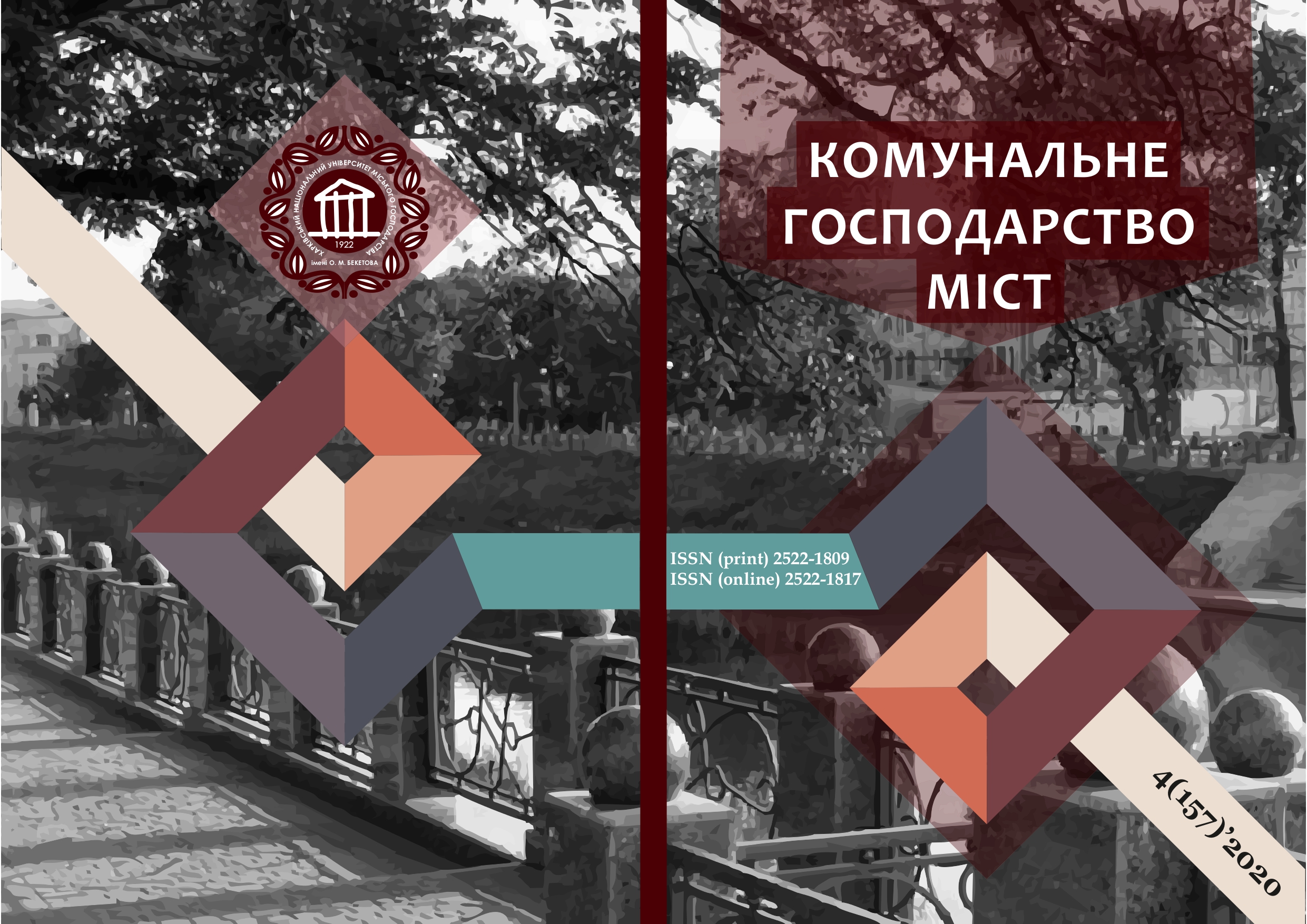ДОСЛІДЖЕННЯ РІВНЕВОГО УТВОРЕННЯ ТА РОЗКРИТТЯ НОРМАЛЬНИХ ТРІЩИН В ЗАЛІЗОБЕТОННИХ ЕЛЕМЕНТАХ
Array
Ключові слова:
залізобетон, елементи, зчеплення, арматура, тріщини, рівні утворення, крок, ширинаАнотація
Дана стаття присвячена виявленню основних закономірностей багаторівневого утворення нормальних тріщин в залізобетонних елементах і конструкціях. Виконано критичний аналіз останніх публікацій, пов’язаних з вказаною тематикою. Дослідами встановлено основні закономірності рівневого утворення та розкриття нормальних тріщин в згинальних елементах. Статистично підтверджено ефективність тих методик розрахунку, в яких крок утворення тріщин безпосередньо пов’язаний з параметрами зчеплення арматури з бетоном.
Посилання
2. Alvarez, M. (1998). Einfluss des Verbundverhaltens auf das Verformungsvermögen von Stahlbeton: Abhandlung zur Erlangung des Titels Doktor der Technischen Wissenschaften. Eidgenössischen Technischen Hochschule.
3. Fernández Ruiz, M., Hars, E., Muttoni, A. (2005). Bond mechanics in structural concrete (theoretical model and experimental results). Lausanne: Ecole Polytechnique F´ed´erale de Lausanne.
4. Rudny, I. A. (2015). Crack resistance of stretched and bent reinforced concrete elements with areas of broken adhesion: author. dis. ... cand. tech. sciences. Saint-Petersburg: State University of Architecture and Civil Engineering.
5. Eligehausen, R., Popov, E. P. and Bertero, V. V. (1983). Local bond stress-slip relationships of deformed bars under generalized excitations: Report No. UCB/EERC-83/23. Berkeley: Earthquake Engineering Research Center of California University.
6. Shima, H., Chou, L.-L. and Okamura, H. (1987). Micro and macro models for bond in reinforced concrete. Journal of the Engineering Faculty of Tokyo University, XXXIX(2), 133-194.
7. Harajli, M. H., Hout, M.A. and Jalkh, W. (1995). Local bond stress-slip behavior of reinforced bars embedded in plain and fiber concrete. ACI Materials Journal, 92(4), 343-353.
8. Karpenko, N. I. (1996). General models of reinforced concrete mechanics. Moscow: Stroyizdat.
9. Veselov, A. A. (2000). Nonlinear theory of coupling of reinforcement with concrete and its applications: author. dis. ... doctor tech. sciences. Saint-Petersburg: State University of Architecture and Civil Engineering.
10. Benin, A. V., Semenov, A. S., Semenov, S. G., Melnikov, B. E. (2013). Mathematical modeling of the process of destruction of the bond between reinforcement and concrete. Part 1. Models taking into account the discontinuity of the connection. Engineering and construction journal, 5(40), 86-99.
11. Shardakov, I. N., Bykov, A. A., Shestakov, A. P., Glot, I. O. (2016). Process of cracking in reinforced concrete beams (simulation and experiment). Frattura ed Integrità Strutturale, 38, 339-350.
12. Kolchunov, V. I., Yakovenko, I. A. (2009). Development of a two-console element of fracture mechanics for calculating the width of crack opening in reinforced concrete structures. Bulletin of civil engineers SPbGASU, 4(21), 160-163.
13. Yakovenko, I. A. (2018). Models of deformation of reinforced concrete on the basis of fracture mechanics: author. dis. ... doctor tech. Sciences. Poltava: National Technical University.
14. Kochkarev, D. V. (2018). Nonlinear resistance of reinforced concrete elements and structures to force influences: author. dis. ... doctor tech. sciences. Poltava: National Technical University.
15. Romashko, O. and Romashko, V. (2018). Evaluation of bond between reinforcement and concrete. MATEC Web of Conf, 230, 02027.
16. Romashko, V. M., Romashko, O. V. (2018). Calculation of crack resistance of reinforced concrete elements taking into account the levels of formation of normal cracks. Coll. scientific works of UDUZT, 181, 58-65.
17. Romashko, O. V. and Romashko, V. M. (2019). Model of multilevel formation of normal cracks in reinforced concrete elements and structures. IOP Conf. Ser.: Materials Science and Engineering, 708(1), 012069.
18. Romashko, V. and Romashko, O. (2017). The construction peculiarities of the deformation and power model of concrete and reinforced concrete resistance. MATEC Web of Conf, 116, 02028.
19. Romashko, V. M. (2016). Deformation-force model of resistance of concrete and reinforced concrete: monograph. Rivne: O. Zen.
20. DSTU B B.2.6-156: 2010. (2011). Constructions of buildings and structures. Concrete and reinforced concrete structures made of heavy concrete. Design rules. Kyiv: Ministry of Regional Development of Ukraine.
21. EN 1992-1-1. (2004). Eurocode 2: Design of Concrete Structures. Part 1-1: General Rules and Rules for Buildings. Brussels: CEN.
22. SP 63.13330.2012. (2013). Concrete and reinforced concrete structures. Basic provisions. Updated edition of SNiP 52-01-2003. Moscow: Ministry of Regional Development of Russia.
##submission.downloads##
Опубліковано
Як цитувати
Номер
Розділ
Ліцензія
Автори, які публікуються у цьому збірнику, погоджуються з наступними умовами:
- Автори залишають за собою право на авторство своєї роботи та передають журналу право першої публікації цієї роботи на умовах ліцензії CC BY-NC-ND 4.0 (із Зазначенням Авторства – Некомерційна – Без Похідних 4.0 Міжнародна), котра дозволяє іншим особам вільно розповсюджувати опубліковану роботу з обов'язковим посиланням на авторів оригінальної роботи та першу публікацію роботи у цьому журналі.
- Автори мають право укладати самостійні додаткові угоди щодо неексклюзивного розповсюдження роботи у тому вигляді, в якому вона була опублікована цим журналом (наприклад, розміщувати роботу в електронному сховищі установи або публікувати у складі монографії), за умови збереження посилання на першу публікацію роботи у цьому журналі.
- Політика журналу дозволяє і заохочує розміщення авторами в мережі Інтернет (наприклад, у сховищах установ або на особистих веб-сайтах) рукопису роботи, як до подання цього рукопису до редакції, так і під час його редакційного опрацювання, оскільки це сприяє виникненню продуктивної наукової дискусії та позитивно позначається на оперативності та динаміці цитування опублікованої роботи (див. The Effect of Open Access).

